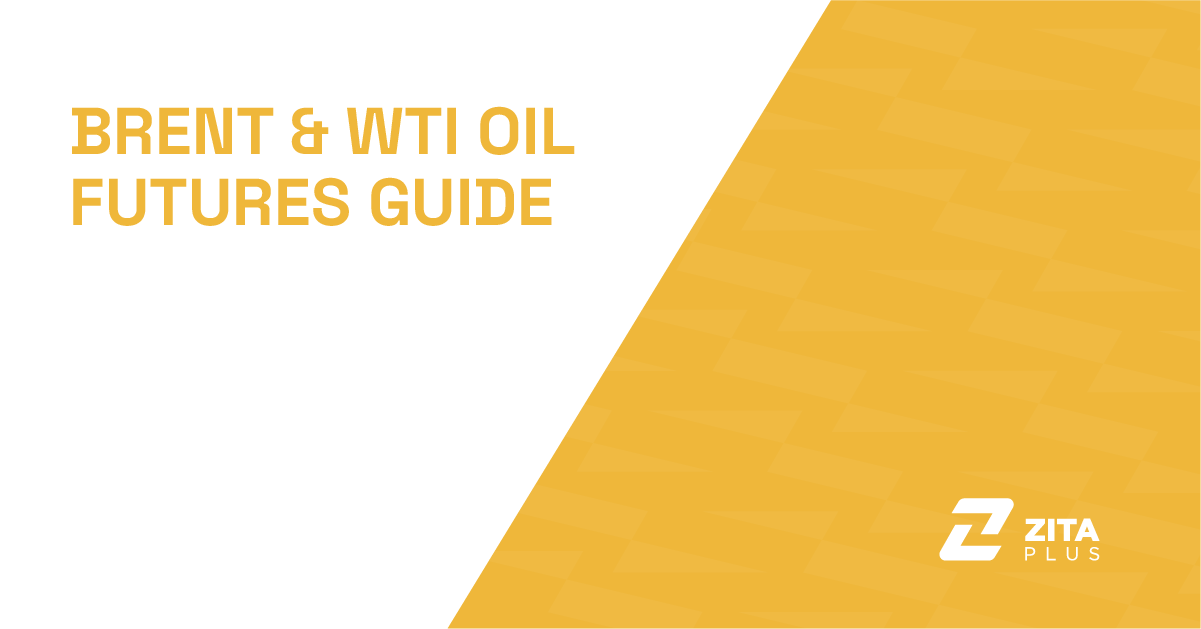
Commodities play a central role in global markets, influencing everything from inflation to investment flows. Take gold or silver for example. They serve as safe-haven assets, inflation hedges, and are also broadly used in technology and industrial applications. Oil, on the other hand, has a more direct impact on everyday costs. It influences everything from transportation and production expenses to global inflation and monetary policy decisions.
There are two key benchmarks: Brent and WTI crude oil. Both offer high liquidity, 1,000-barrel contract sizes, and nearly 24-hour trading. These futures products are widely used for both directional trade and hedging strategies.
In this guide, we’ll break down how Brent and WTI futures function as CFDs, walk through practical examples, and compare their specifications.
Energy CFD futures are derivative instruments that let traders speculate on oil prices without dealing with physical delivery or exchange-traded futures accounts. These products are structured for flexibility, allowing traders to enter global oil markets with lower capital requirements.
Unlike spot instruments that reflect immediate prices, CFD futures are tied to specific contract months. This means the price you see is based on a particular future’s expiry, not the current market rate. Each contract typically represents 1,000 barrels of crude oil and is quoted in US dollars per barrel. For example:
CFD futures are settled in cash. When the contract nears expiration, open positions are automatically rolled over to the next active month. This process can be handled manually as well.
If you're used to spot oil or rolling weekly positions, trading energy futures CFDs gives you a closer link to institutional benchmarks. It's especially useful for traders who rely on technical analysis, because futures prices tend to react more cleanly to supply and demand shifts, inventory data, and geopolitical headlines.

A portfolio manager anticipates Brent prices will climb due to OPEC supply cuts. They enter a long position on UKOIL, buying 10 lots.
A trading desk is managing downside risk ahead of a key EIA inventory release. They short 20 lots of USOIL# to take advantage of expected oversupply.
Energy futures are one of the most popular instruments among professional and institutional traders because they provide both speculative and risk management opportunities. Here’s why they stand out:

Brent and WTI are global benchmarks, meaning their prices react instantly to almost every geopolitical event, supply cut, or economic data. Many traders capitalize on these price swings using short-term technical strategies, while others focus on fundamental stimuli such as production cuts or macroeconomic reports.
With leverage, traders can control large contract sizes while committing a relatively small margin. For example, one UKOIL contract represents 1,000 barrels of crude oil. Even a small price change can have a strong impact on returns. That’s why those future contracts are one of the favorite instruments among active forex traders.
Producers, refiners, and energy-intensive industries rely on futures to shield themselves from crude price volatility. For example, a refinery may lock in oil prices ahead of peak seasonal demand, ensuring cost stability, while airlines often hedge fuel expenses by securing prices through futures contracts.
Beyond industry players, traders and fund managers also use oil futures CFDs to hedge their portfolios. By opening positions that move opposite to their existing exposures, they aim to minimize potential losses if the market turns against their primary investments.
ZitaPlus is more than a trading venue. It’s a trusted liquidity provider for brokers, hedge funds, and professional traders who need reliability, scale, and real support behind their strategies. Here's what sets us apart in energy futures trading and hedging:
ZitaPlus experience is built to handle the pace of the financial markets. We offer consistent pricing with tight spreads on UKOIL and USOIL#, averaging around 3 points even during volatile sessions.
Large orders are filled without noise, slippage is controlled, and execution is clean. If you trade volume, you’ll immediately notice the difference in stability and response speed.
At ZitaPlus, liquidity starts with us, not with third parties. As an established liquidity source for other brokers, our infrastructure connects directly to Tier-1 banks, global exchanges, and proprietary feeds. This lets us offer reasonable pricing and fast fills without routing your orders through layers of middlemen.
We maintain a regional office in Dubai where clients and partners are always welcome. You can visit us to discuss trading conditions, explore hedging solutions, or receive hands-on onboarding assistance. Our local team is ready to meet face-to-face and assist with your needs.
Apart from speculative trading activities, many of our clients come from industries where fuel and energy prices have a direct impact on operating costs. Airlines, logistics firms, manufacturers, and energy distributors often face serious financial risks when oil prices swing.
At ZitaPlus, we provide excellent hedging conditions that help companies manage their risk through structured trades or fixed-price strategies.
The goal isn’t always to make a profit, but to reduce uncertainty and keep margins stable. Businesses can stay focused on their main operations without unexpected shocks by neutralizing risk through opposite positions or futures-based hedging.
Our infrastructure is built especially for high-volume operations. With competitive pricing, expert analysis, V.I.P support, and strong liquidity, we help HFT individuals and corporate clients trade and hedge with confidence.
What’s the difference between Brent and WTI crude oil contracts in terms of volatility?
WTI (USOIL#) tends to be more sensitive to U.S. inventory data, while Brent (UKOIL) often reacts more to global geopolitical risks.
Are swap rates applied to futures CFDs?
No. Futures CFDs on ZitaPlus are swap-free since rollover is managed by contract pricing, not daily interest.
What happens during contract rollover?
Your position is moved to the next month at market price. The rollover adjustment reflects the price gap between months.
Is there a minimum lot size for trading energy futures on ZitaPlus?
Yes. The minimum is 0.10 lots (100 barrels), ideal for scaling or partial hedging.
Can I hedge the same symbol in opposite directions?
Yes, hedging is allowed on the same account. Margin is only required on one side.
Can I use API for automated futures trading?
Yes. ZitaPlus supports FIX API and other integration options for qualified clients.
Can I request custom conditions for large-volume hedging?
Yes. ZitaPlus offers customized terms for corporate clients, including reporting, volume discounts, and liquidity access.
Energy futures play a key role in both speculative trading and real-world risk management. With access to contracts like Brent and WTI futures, traders and institutions can take advantage of price movements or protect their business from unexpected volatility.
If you're managing high-volume transactions or looking for tailored solutions to reduce your exposure, our team is ready to assist. Reach out to your account manager or visit our Dubai office.
Would like to learn how to look financial markets from a different angle? Then keep reading and invest yourself with ZitaPlus.